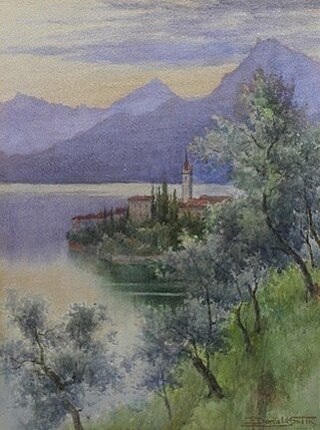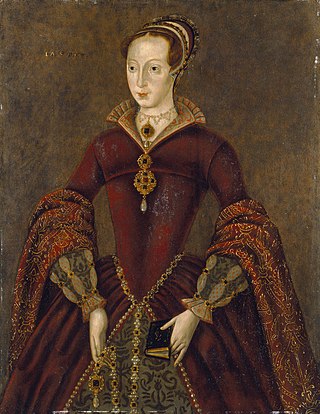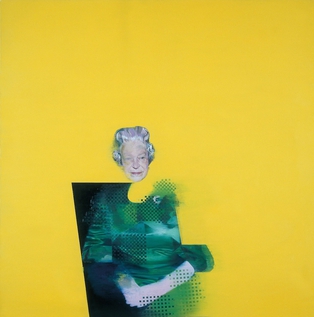
Lucian Michael Freud was a British painter and draughtsman, specialising in figurative art, and is known as one of the foremost 20th-century English portraitists. He was born in Berlin, the son of Jewish architect Ernst L. Freud and the grandson of Sigmund Freud. Freud got his first name "Lucian" from his mother in memory of the ancient writer Lucian of Samosata. His family moved to England in 1933, when he was 10 years old, to escape the rise of Nazism. He became a British naturalized citizen in 1939. From 1942 to 1943 he attended Goldsmiths' College, London. He served at sea with the British Merchant Navy during the Second World War.

Pietro Annigoni, OMRI was an Italian artist, portrait painter, fresco painter and medallist, best known for his painted portraits of Queen Elizabeth II. His work was in the Renaissance tradition, contrasting with the modernist style that prevailed in his time.
Francis Dennis Ramsay, known as Dennis Ramsay, was a Scottish portrait painter, trained in London and Paris, who worked mainly in Australia in the classical tradition.
Bryan Organ is a British artist considered one of the leading and most innovative English portrait painters of the 20th century. His paintings have included portraits of prominent public figures and of members of the British royal family. Organ is also known for landscape paintings, such as St Pancras Station,, and lithographic studies of animals (Tate). London's National Portrait Gallery holds a total of sixteen of his portraits of which six were commissioned by the Gallery's Trustees.

Fishmongers' Hall is a Grade II* listed building adjacent to London Bridge. It is the headquarters of the Worshipful Company of Fishmongers, one of the 111 livery companies of the City of London. The Hall is situated in Bridge Ward.

Helen Donald-Smith was a British artist who worked in oil and watercolour, and was active circa 1890–1925. Her work featured landscapes, particularly of Venice, and portraits, including that of Brigadier General F.W. Lumsden VC, DSO.

Zsuzsi Roboz was a London-based Hungarian painter known for her portraiture paintings and paintings of the arts. Her work is in public galleries including the Tate Britain and The National Portrait Gallery.
Sara Leighton is an English society portrait painter, author, actress and personality, also noted for her beauty.

Ralph Heimans, is an Australian-British contemporary portrait painter based in London, England. He is considered to be "one of today's leading portrait artists". He is best known for his large-scale Royal portraits of Queen Elizabeth II, Charles, Prince of Wales, and Prince Philip, Duke of Edinburgh, along with portraits of leading contemporary cultural figures. In 2014, Heimans was awarded a Member of the Order of Australia for Services to Portraiture.
Tarnya Cooper is an art historian and author who is currently the National Trust's Curatorial & Collections Director.

The "Streatham" portrait is an oil painting on panel from the 1590s believed to be a later copy of a woodcut of the English noblewoman Lady Jane Grey from 1580. It shows a three-quarter-length depiction of a young woman in Tudor-period dress holding a prayer book, with the faded inscription "Lady Jayne" or "Lady Iayne" in the upper-left corner. It is in poor condition and damaged, as if it has been attacked. As of January 2015 the portrait is in Room 3 of the National Portrait Gallery in London.

The Queen is a 1997 portrait by the English painter Justin Mortimer of Queen Elizabeth II. The portrait was commissioned by the Royal Society of the Arts to mark their 50th anniversary of association with the Queen, and hangs in their headquarters. It was officially unveiled in May 1998. The portrait was initially displayed to the public for five days in January 1998 at the Business Design Centre in Islington, north London.

Her Majesty Queen Elizabeth II – An 80th Birthday Portrait is a 2005 oil painting of Queen Elizabeth II by Rolf Harris, commissioned by the BBC for the Queen's 80th birthday. It was unveiled at the Queen's Gallery in Buckingham Palace and publicly displayed there from 2005 to 2006. A BBC television special about its creation, The Queen, by Rolf, was broadcast on BBC One on 1 January 2006. The painting was voted the second-most-favoured portrait of the Queen by the British public, but it was critically derided.
Henry Ward is a British artist, who in 2010 was selected to exhibit his entry of The 'Finger-Assisted' Nephrectomy of Professor Nadey Hakim at the ‘BP Portrait Award’ at the National Portrait Gallery, London, and in 2016 was chosen to paint a portrait of Queen Elizabeth II to mark her 60-year tenure as the longest-serving patron of the British Red Cross.

Queen Elizabeth II is a 2016 painting of the British monarch by British-Canadian artist Henry Ward. Its full title is Her Majesty Queen Elizabeth II with the Founder of the British Red Cross Henri Dunant. Painted in secret in Canada, it was unveiled by the Queen at Windsor Castle that October and commemorated the Queen's 60-year role as the patron of the British Red Cross.

The Coronation Theatre: Portrait of HM Queen Elizabeth II was painted by Ralph Heimans in 2012 to mark the Diamond Jubilee of Queen Elizabeth II. While the sitting took place in Buckingham Palace, the Queen is portrayed in Westminster Abbey, standing at the centre of the Cosmati pavement where she had been crowned 60 years previously. The mosaic pavement, referred to by Shakespeare as "the floor of heaven", is rich in symbolism and was created to evoke the "eternal pattern of the universe". It has been an integral part of the coronation ceremony since Henry III of England and is where every English monarch has been crowned for the last 900 years.
Elaine Goble is a Canadian visual artist who lives in Ottawa, Ontario.
Giancarlo Dughetti was an Italian miniature painter.

Conversation Piece at the Royal Lodge, Windsor is an oil-on-canvas painting by Herbert James Gunn. It is part of the collection of the National Portrait Gallery (NPG) in London. The painting depicts King George VI and Queen Elizabeth and their daughters, Princesses Elizabeth and Margaret, taking tea in the Royal Lodge in Windsor Great Park. It was commissioned by the NPG in 1950.
Sir Hugh Frank John Leggatt was a British art dealer and patron. He was the senior partner in the gallery Leggatt Brothers, and art dealer to members of the Royal Family, including Queen Mary, and Queen Elizabeth, The Queen Mother. Leggatt financed the National Portrait Gallery's commission of the first official portrait of The Princess of Wales.














